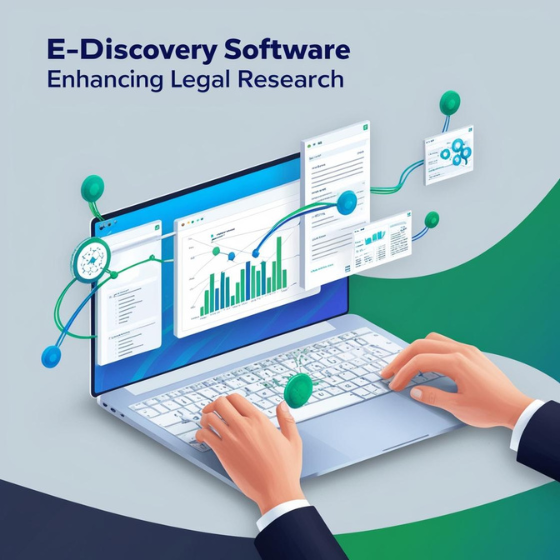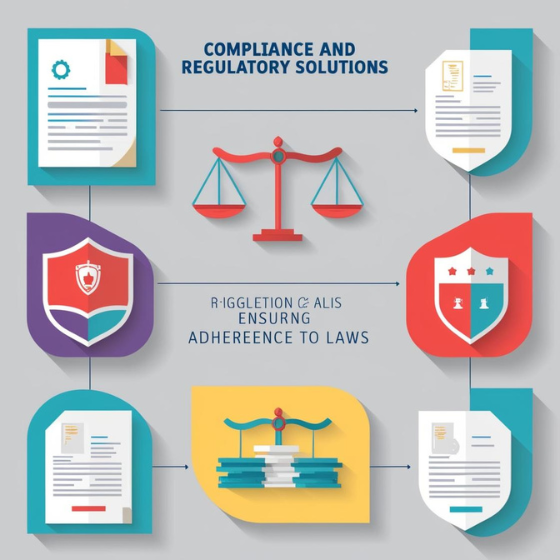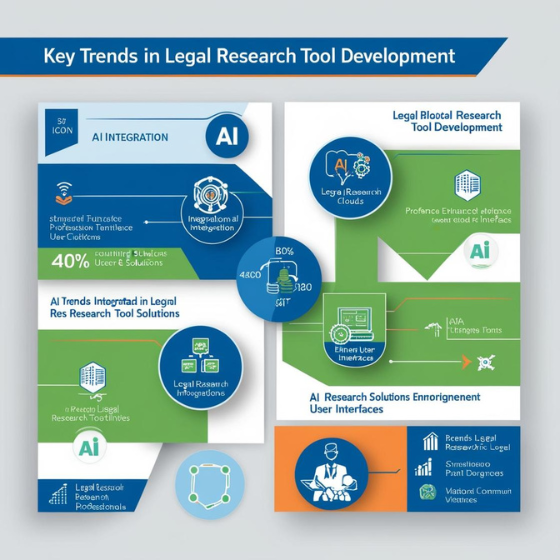E-Discovery Software: Enhancing Legal Research
In today’s digital age, legal research has become more complex. Lawyers face the challenge of sorting through massive amounts of digital data—emails, social media posts, and cloud files. Finding key documents relevant to a case can feel overwhelming. E-discovery software streamlines this process by automating tasks like data collection, review, and analysis, making legal research faster and more efficient.
In this blog, we’ll explore the role of e-discovery software in improving legal research. We will cover the software’s key features, its benefits, and how it can help law firms and legal teams save time, money, and effort in managing cases.
What is E-Discovery Software?
E-discovery software refers to tools that assist legal professionals in collecting, processing, and reviewing digital data during the discovery phase of litigation. The software helps locate key documents, emails, and other digital evidence relevant to a case.
By automating these tasks, e-discovery software eliminates the need for lawyers to manually sift through data, improving accuracy and saving time. It is especially valuable for handling large volumes of data in corporate litigation, investigations, and compliance cases.
Why is E-Discovery Software Important?
Traditional methods of discovery are often slow and costly. Lawyers would spend countless hours manually reviewing thousands of documents, which is both inefficient and error-prone. Here are the main reasons why e-discovery software is crucial:
- Faster Discovery Process: E-discovery software automates data collection, allowing lawyers to complete the process much more quickly.
- More Accurate Results: Automation reduces human error, ensuring that no important documents are missed.
- Cost-Effective: By reducing the time and manpower required for discovery, law firms can save on costs and offer better pricing to clients.
Key Features of E-Discovery Software
1. Data Collection and Preservation
The first step in the discovery process is gathering relevant data. E-discovery software automatically collects data from different sources, such as emails, documents, social media, and cloud storage.
- Automated Collection: This feature saves time and ensures that no data is overlooked.
- Preservation: The software ensures data is preserved securely and forensically, preventing alterations or deletions.
Data preservation is crucial for ensuring the integrity of evidence in legal cases.
2. Advanced Search and Filtering
Once data is collected, the next step is to search through it and find the most relevant documents. With e-discovery software, searching is much faster and more targeted.
- Keyword Searching: Lawyers can search for specific terms or phrases within the documents.
- Metadata Analysis: The software can also analyze metadata, such as file creation dates or authorship, to provide more context.
- Custom Filters: You can filter results based on criteria like document type, date, or size.
These advanced search features enable legal teams to find critical documents quickly.
3. Document Review and Tagging
After searching for relevant documents, legal teams need to review them. E-discovery software helps with this by providing tools for tagging and organizing documents.
- Tagging Documents: Legal professionals can label documents (e.g., “relevant,” “privileged”) for easy organization.
- Batch Review: The software allows you to review multiple documents at once, helping identify patterns across documents.
- Redaction: Sensitive information can be redacted before sharing documents with other parties.
This feature streamlines the document review process, making it faster and more organized.
4. Collaboration and Reporting Tools
E-discovery software includes collaboration features that allow legal teams to work together efficiently.
- Collaboration: Teams can share documents and notes securely, keeping everyone on the same page.
- Real-Time Updates: Legal professionals can see the status of their work in real time.
- Customizable Reports: Create reports that track the progress of e-discovery, which can be used in case preparation.
These features ensure better communication and coordination across teams.
5. Security and Compliance
Security is vital when dealing with sensitive legal data. E-discovery software includes features designed to protect your data and ensure compliance.
- Encryption: Sensitive documents are encrypted to prevent unauthorized access.
- Access Control: You can control who can view or modify documents.
- Audit Trails: The software records every action taken on a document, providing a clear history of who accessed or modified it.
These security features help protect both your clients and your firm.
Benefits of E-Discovery Software for Legal Research
1. Saves Time and Increases Efficiency
With e-discovery software, time-consuming tasks like data collection and review become automated. This means legal teams can focus on higher-level tasks, such as strategy and case analysis.
- Fast Processing: Software handles time-consuming processes in a fraction of the time.
- Fewer Errors: Automation reduces the risk of missing important evidence.
The time saved in the discovery phase translates to more time for case preparation, trial strategy, and other essential tasks.
2. Reduces Costs
Manual discovery processes are costly. Legal teams must often rely on large document review teams, which can be expensive. E-discovery software reduces the need for such teams, thus lowering costs.
- Fewer Resources Needed: With automation, law firms can reduce the size of their review teams.
- Cost Efficiency for Clients: Law firms can offer more competitive pricing by streamlining the discovery process.
E-discovery software provides a cost-effective solution while maintaining the quality of legal research.
3. Increases Accuracy
Manual review can lead to human error, potentially overlooking critical documents. E-discovery software reduces this risk by automating the discovery process.
- Precise Document Identification: Automated systems use algorithms to search for relevant documents based on keywords and metadata.
- Consistency: The software ensures that every document is reviewed in the same way, preventing inconsistencies.
Improved accuracy helps legal teams build stronger cases and avoid mistakes that could harm their clients.
How to Choose the Right E-Discovery Software
When selecting e-discovery software, you should consider the following factors:
- Scalability: Make sure the software can handle large volumes of data, especially for complex cases.
- User-Friendly: The software should be easy to use and integrate with your existing systems.
- Security: Ensure the software has strong security features, such as data encryption and access control.
- Customer Support: Look for a provider that offers reliable customer support and training.
Choosing the right software is crucial to maximizing efficiency and improving the discovery process.
Conclusion: Enhance Your Legal Research with E-Discovery Software
In the fast-paced legal world, e-discovery software is a game-changer. By automating data collection, review, and analysis, e-discovery software makes legal research faster, more accurate, and more cost-effective. It helps law firms manage complex litigation more efficiently and improves case outcomes.
If you want to enhance your legal research and streamline your discovery process, consider adopting e-discovery software. Contact Sodio today to explore how we can help you integrate e-discovery tools into your legal workflow.







